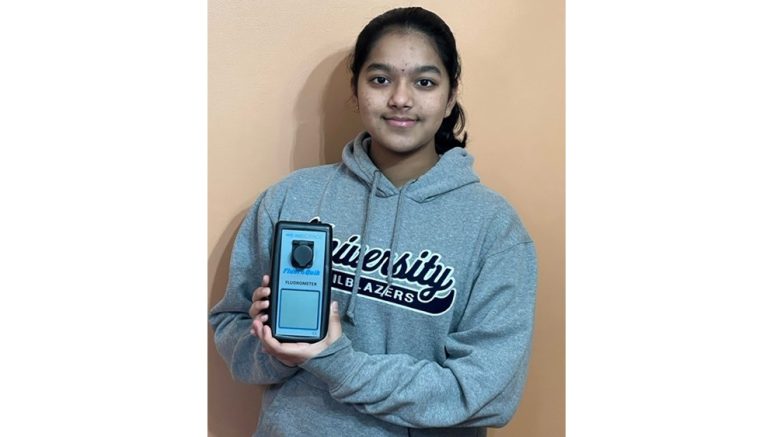By STU CLAMPITT
news@readthereporter.com
Rapid identification of potential hotspots of nanoplastics contamination has been challenging due to a lack of field-based detection methods.
That is changing because Carmel resident and University High School freshman Vidhatri Iyer has developed a rapid field-based technique for detecting nanoplastics in water samples. She has been working with the Trico Regional Sewer Utility treatment facility to track nanoplastic load during waste treatment. She is monitoring nanoplastics in Marion and Hamilton counties’ water streams which feed into the White River.
The Reporter spoke with her father, Chandrasekar Iyer, about her impressive work to help monitor water quality in a more efficient way than has ever been possible.
“Since sixth grade, my daughter has been working with scientists at the TriCo Regional Sewer Facility, which processes all out sewage and purifies the water,” Iyer told The Reporter. “Plastics are used widely. Macroplastics like bottles are easy to pick it up. But what also happens is that plastics degrade over time because of many factors. They get broken down into microscopic particles and that gets mixed into water streams and the soil. The question is how do you really monitor that?”
When Vidhatri Iyer talked to scientists at TriCo, she learned that the current technology requires hundreds of thousands of dollars in equipment to test for microplastic contamination. The test involves sending samples to a lab that has the required testing equipment and waiting approximately 10 days for a result to be returned. That process prevents routine, short-term testing.
“She worked with a company in California to develop an instrument that can read nanoplastics in a one-step method,” Iyer said. “Basically she would filter the water and add a dye. In 10 minutes it reads out the presence of these nanoplastics. Why would that be important? These nanoplastics are so abundant that we knew it was there, but there was no way to measure it [affordably and quickly]. The good news is that once the water leaves the water treatment plant, these nanoplastics are way below the detection level.”
Vidhatri Iyer used her new technology to track the levels of nanoplastics in the water supply over six months in the sewage treatment facility to determine the quality of current water treatment.
She has also worked with the Marion County Water Department, which has volunteers who take water samples to monitor quality across central Indiana. Her tests show nanoplastics were below the detection levels across the region.
Vidhatri Iyer presented her findings at a water summit in September. According to her father, experts were awed by how quickly her tests allow detecting the presence of plastics in water samples.
“It is a hazard we knew existed, but there was not a simple way to measure it,” Iyer said.
One possible future application is to add this test to routine screening when water quality testing is done.

